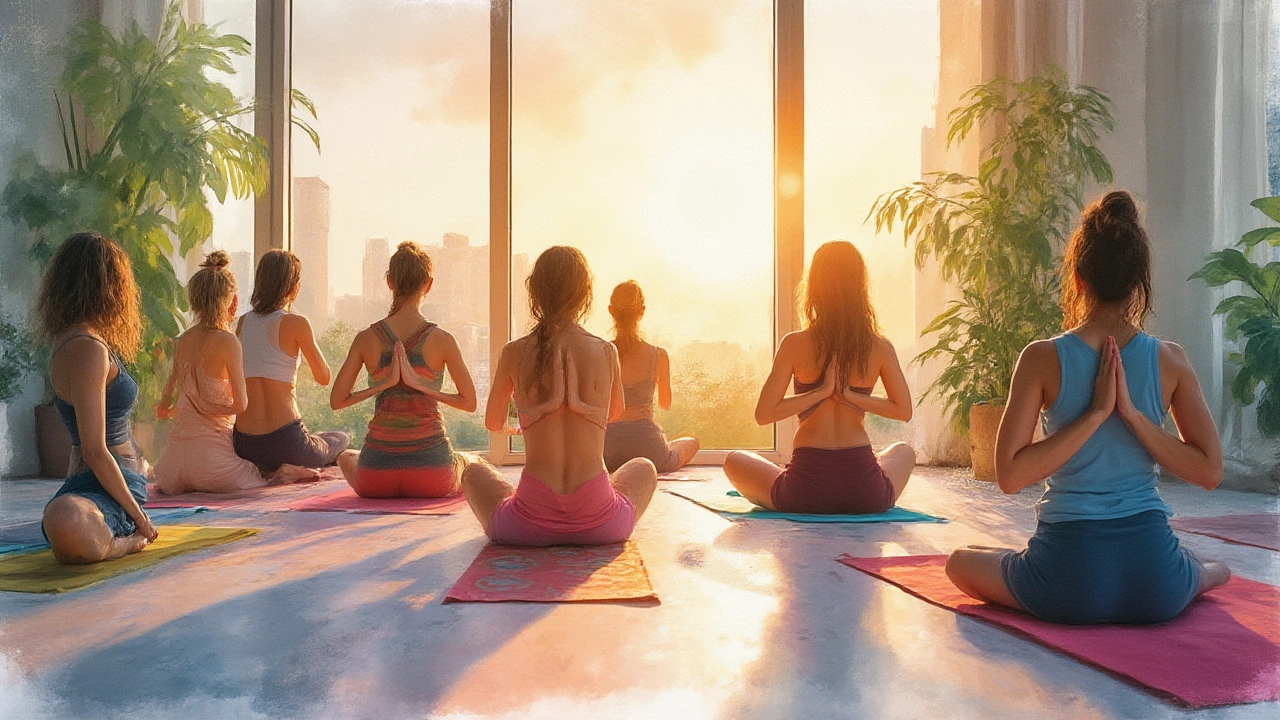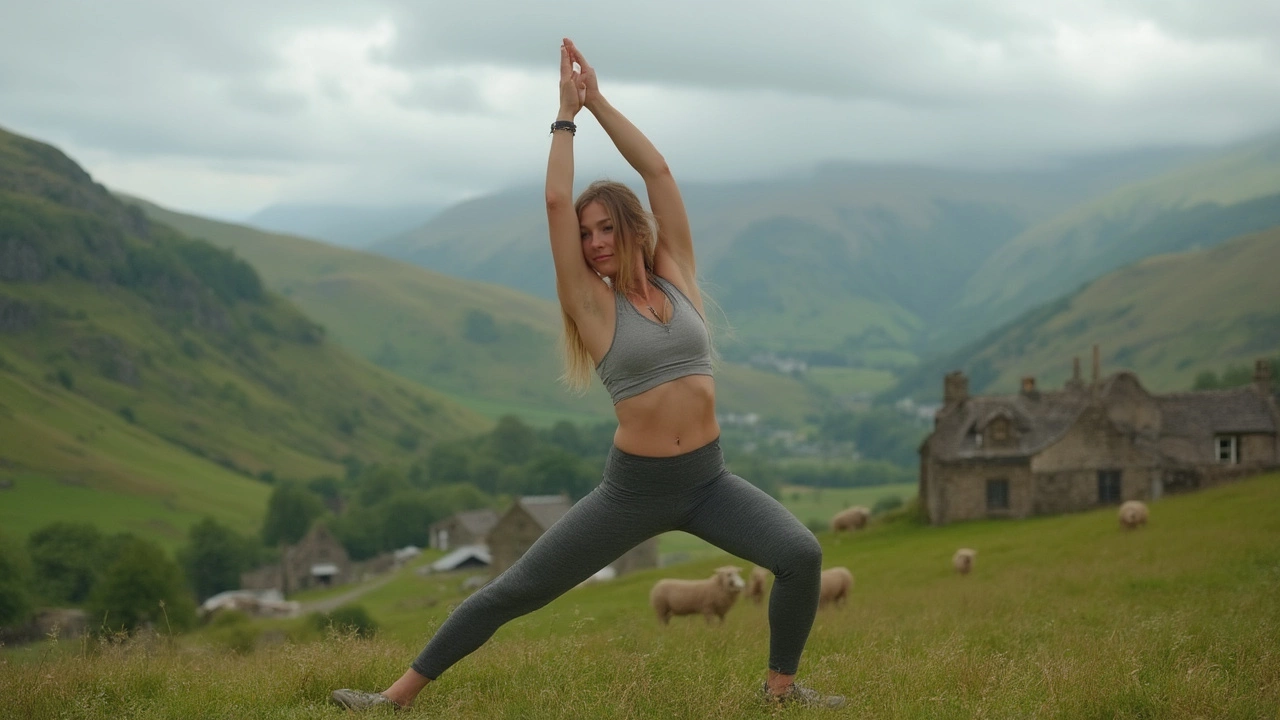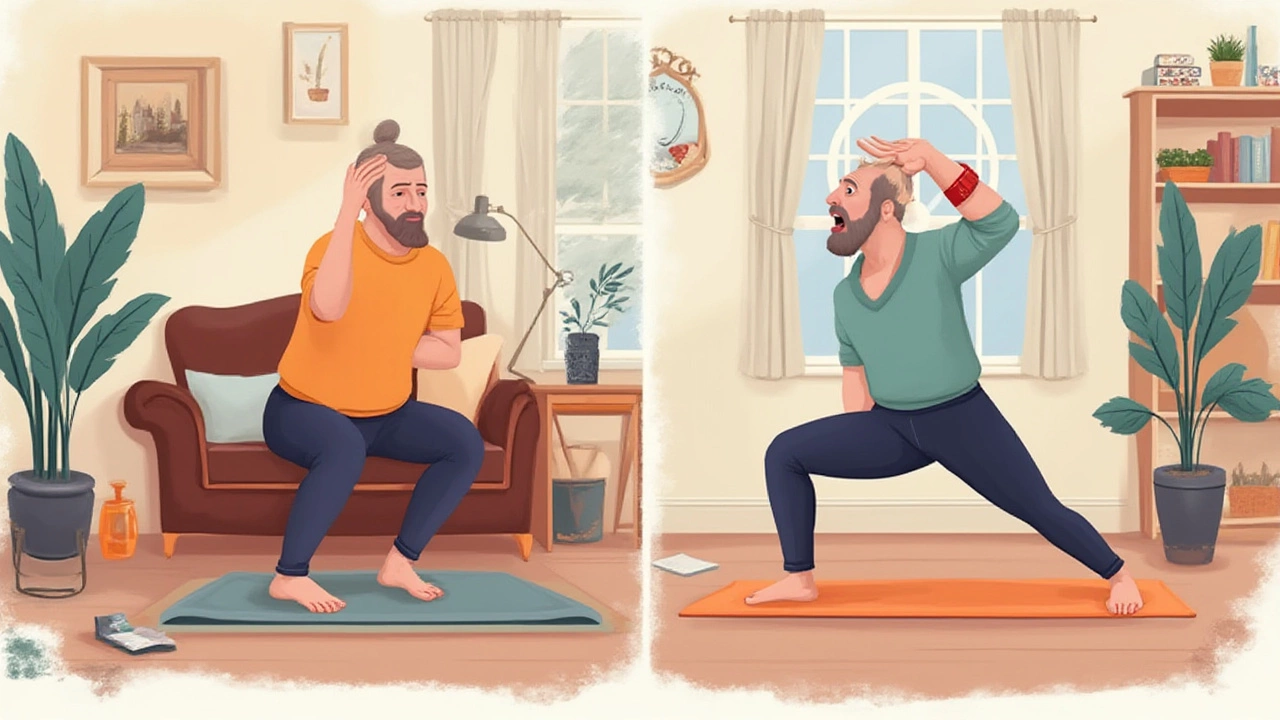
There’s a secret the fitness world doesn’t always want to admit: a lot of those super-fit, glossy Instagram influencers swapped marathon gym sessions for sticky yoga mats and a daily flow. Yoga’s exploded into the mainstream, but it still gets dismissed as just “stretching” or “relaxation time.” Here’s where things get real: some of the strongest, fittest bodies come from dedicated yoga practice alone. No dumbbells, treadmills, or protein shakes—just you, your mat, and maybe a few blocks for support. That’s not TikTok hype, either. A 2024 study by AUT (Auckland University of Technology) found that adults practicing dynamic yoga for 60 minutes, five times a week, improved their core strength and cardiovascular fitness almost as much as those in moderate intensity circuit classes. So, can you actually get fit with just yoga? Let’s untangle the stretch-happy myths from what actually happens to your body when you swap squats for sun salutations.
What Is “Fitness,” Anyway? Not Just Biceps and Bench Press
Fitness isn’t just one thing. It’s not the size of your biceps, your mile pace, or how many burpees you can hate in a row. It’s a mix: strength, endurance, flexibility, balance, body composition, and how well your heart and lungs do their thing. When people eye up yoga and ask if it’s “enough” for fitness, what they’re really craving is an answer to: will this give me the stuff that matters for a strong, healthy, able body? Here’s the breakdown: yoga—depending what style and intensity you choose—targets almost every part of physical fitness except top-end explosive power. Power yoga, Ashtanga, and Vinyasa flows spike the heart rate. Isometric holds in Warrior poses or Planks build muscle endurance and even bone strength, especially in women. Faster flows tap into cardio zones. Yin or Restorative yoga works on flexibility and recovery. And nearly all forms ramp up your balance and joint control.
Actual numbers? The American College of Sports Medicine points to yoga classes keeping heart rates around 55–75% of your maximum, which sits right in the “moderate intensity” band. That means for weight management and basic fitness, a well-paced yoga class does the job. Flexibility? Check—one study out of New Delhi charted a 12% increase in hamstring range after just six weeks of daily 30-minute yoga. Balance? One British survey of adults over 50 found yoga reduced falls by a third. On muscle tone, research from the University of Wisconsin-Madison measured triceps and shoulder strength boosts of 17–24% after participants tackled Vinyasa Yoga three times a week for two months.
But, here’s the honest spin: yoga alone won’t give you an Olympic sprinter’s vertical leap or bodybuilder’s bulk. It’s not a fix for high-performance anaerobic fitness. For the average person, though, it covers all but the outer edges of the fitness wheel, and does it in a way that’s gentle on joints, easy to sustain for the long haul, and—unlike bootcamps or interval sprints—won’t leave you dreading your next session. So for 95% of normal humans wanting to be strong, supple, energized, and steady, yoga isn’t just “enough.” It often beats the showy, burn-out grind of classic workouts.
The Deep Physical Gains: What Yoga Does (and Doesn’t) Change in Your Body
Let’s pull back the curtain. You’re probably wondering—if I only do yoga, what’s actually happening to my muscles, bones, and heart? And—be honest—will anyone notice?
Strength goes up, but it’s sneaky. Yoga’s not about pumping out reps with added weight—it’s about using your own weight in poses, which surprised researchers at Harvard Medical School. Women who swapped twice-weekly Pilates or light weights for yoga maintained lean muscle mass, especially in their shoulders and thighs. Do you get Hulk biceps? Nope. But you’ll notice better posture, see muscle definition, and—best part—joint pain tends to vanish. Yoga does epic things for stability: dynamic flows force your core to switch on non-stop. Holding a plank in Downward Dog or floating from a lunge to single-leg poses fires up all those “forgotten” side muscles.
Cardio, weirdly enough, gets some love, too. The sweatier Power or Vinyasa styles work your heart and lungs as much as brisk walking or cycling, according to data from the Yoga in Practice Project 2023. Your resting heart rate drops, blood circulation improves (hello, healthy glow), and blood pressure tends to normalize. But if running a half-marathon’s on your bucket list, you’ll need extra training. Yoga boosts aerobic health up to a point—think healthy-for-life, not race-day peak.
One zone where yoga shines above gym routines is mobility and flexibility. This isn’t just about doing splits on TikTok—a flexible, springy body feels lighter and moves better in daily life. Ask any physical therapist: stiff muscles and joints cause most of the “old person aches” people fight past 40. Studies have repeatedly shown yoga can cut lower back pain in half, reduce injury risk, and even shrink swelling in arthritic joints. That sort of gain isn’t just athletic—it’s freedom.
What doesn’t yoga do? If you want pure max muscle mass (think bulging pecs), or the kind of all-out explosive performance high-intensity interval training gives, then yoga’s not your solo ticket. Those demands need more overload and fast-twitch challenges than yoga dishes out. For athletes chasing a very specific edge, yoga makes a brilliant sidekick, but not the standalone plan.

Weight Management and Yoga: Can It Help You Lose Fat or Tone Up?
Confession: when people ask if you can “get fit” with yoga, most really mean, “Will it help me get lean?” No shame—our culture’s obsessed with body composition. But yoga approaches this differently.
Gentle yoga won’t torch calories like Barry’s Bootcamp. But hot yoga, Power yoga, and long, intense Vinyasa classes do burn serious energy—up to 500 calories per hour, on par with moderate running. Check out this quick table to compare rough calorie burn per hour for different yoga styles:
| Yoga Style | Calories Burned/Hour (Average Adult) |
|---|---|
| Yin/Restorative | ~120 |
| Hatha (gentle) | ~200 |
| Vinyasa/Ashtanga | 350-500 |
| Bikram/Hot Yoga | 400-600 |
More interesting? Studies show yoga changes how people eat. In long-term surveys from Seattle’s Fred Hutchinson Cancer Research Center, consistent yoga practitioners were less likely to binge eat and more likely to recognize fullness cues. Turns out mindful movement spills over into mindful munching. People who stuck with yoga for a year tended to lose weight—even if the classes weren’t the sweaty kind—because self-awareness went up while stress (and snack attacks) went down. Cortisol, the stress hormone that tells your body to hang onto belly fat, drops sharply after yoga. That makes yoga a fat loss double-whammy: it burns some calories, but more importantly, it rewires how you relate to food.
If your idea of “toned” is long, lean-looking muscles versus bulk, yoga’s your friend. Slow holds, repeated flows, and bodyweight work shape arms, legs, abs, and back—without getting “bulky.” Ever noticed those airy, muscular yoga teachers? That’s the payoff. For big changes, you’ll need frequency. Five sessions a week—doesn’t matter if it’s 25 or 60 minutes—beats one monster stretch class every Saturday. Consistency > Intensity.
Yoga vs Traditional Exercise: What’s the Trade-Off?
If you’re getting results (or stalling out) with other workouts, is switching to yoga a downgrade? Or are you skipping something important?
Traditional resistance workouts and structured cardio—think weights, HIIT intervals, or running—let you hit slices of the fitness pie in isolation, with precise overload. If you want monster quads, sprint speed, or to deadlift twice your weight, those tools rule. But they also come with soreness, injury risk, and usually a higher drop-out rate. Yoga, instead, wraps nearly everything in one bundle: you get moderate strength, plenty of stamina, much improved flexibility and balance, plus built-in recovery.
Biggest trade-off? Maximum power output. Olympic lifts, box jumps, or 400m sprints push human performance to limits yoga can’t reach. For older adults or anyone with joint issues, yoga’s lower-impact nature protects knees, hips, and back—with bone density still getting a shot in the arm from loaded poses like Warrior II or Plank. Convenience matters too: you need zero equipment, zero machines, and you can practice anywhere—bedroom, park, or hotel floor. And for busy parents, yoga can be done quietly without waking snoozing babies.
Social comparison is overrated. Gym scenes can intimidate; yoga studios (or home practice) feel way less judgmental, especially for beginners. The built-in breathwork of yoga also smashes gym routines on stress relief, focus, and mental clarity. That’s why so many elite athletes now fold in yoga as their “reset button” in training blocks. On the other hand, if you thirst for the clarity of tracking 5kg personal bests or love exercise gadgets, yoga won’t give you those numbers distractions. Your “PB” becomes how long you can float in Crow pose—or how calm you stay in an awkward twist, not how much iron you move.
For most people—especially from 30 onwards—a yoga-only routine checks the necessary boxes for daily health, happy joints, and resilient muscles. If pure performance or medical rehab is your thing, blend yoga with other movement, but don’t underestimate what daily foundational practice does for body and mind.

The Smartest Ways to Get Fit with Only Yoga
Here’s where the magic happens. If you want maximum results from yoga (and nothing else), you need to be a bit strategic—but it’s easier than you think.
First, pick your style for your goals:
- For cardio and endurance: Try Power Yoga, Vinyasa, Ashtanga, or Bikram (hot yoga). These get your heart rate up and have a “workout feel.”
- For strength and muscle tone: Go for slow, strong holds—think Hatha Yoga, Iyengar, or targeted flows with plenty of lunges, planks, Chaturanga, and single-leg balances.
- For flexibility and recovery: Yin Yoga or gentle stretching flows repair muscles and calm the nervous system.
Mix and match. Don’t stick to just one kind—aim for 3–5 sessions a week mixing dynamic flows and slower recovery sessions. Adapt intensity. If you wake tired, do gentle flow or Yin. If you need a challenge, the yoga for fitness routines on YouTube or specialized apps like DownDog will let you pick 30–60 minute burners focused on glutes, arms, or core.
Stick to these smart moves supercharging your progress:
- Record your flows! Selfies aren’t just for Instagram—seeing your alignment and posture improves faster than going blind every session.
- Work on progression. Hold your Warrior or Plank just 5–10 seconds longer each week. Increase the number of flows per session, or add new, harder balance moves like Crow or Side Plank.
- Use music or guided videos: Motivation spikes and time flies. My weekly go-to? A rotation of 45-minute vinyasa flows from Yoga With Adriene, plus a sprinkle of calming evening Yin to turn off my work brain.
- Don’t skimp on breathwork: Meditation or pranayama practices might seem fluffy, but they control stress, help recovery, and—even better—improve heart rate variability, a top marker of cardiovascular fitness.
- Track non-scale wins: Clothes fitting better, better sleep, improved mood, stronger posture—those are unmissable signs of real, lasting fitness. Weighing less is only one part of the bigger health story.
- If injuries or pain pop up, see a physio or yoga therapist—not all “stretching” helps. Individualize your practice to your body and history.
The bottom line—yes, you can get totally fit doing only yoga, as long as you train at the right intensity, mix up your routines, and stay consistent. For 95% of everyday life, yoga is enough. It keeps you moving, supports your heart and muscles, sharpens your mind—and, unlike 90% of trendy workouts, people actually stick to it for years. Backed by science, tradition, and the stories of yogis everywhere, this ancient practice is a modern health hack. All you really need is a mat and a bit of time—and the commitment to stick with it, week after week.
